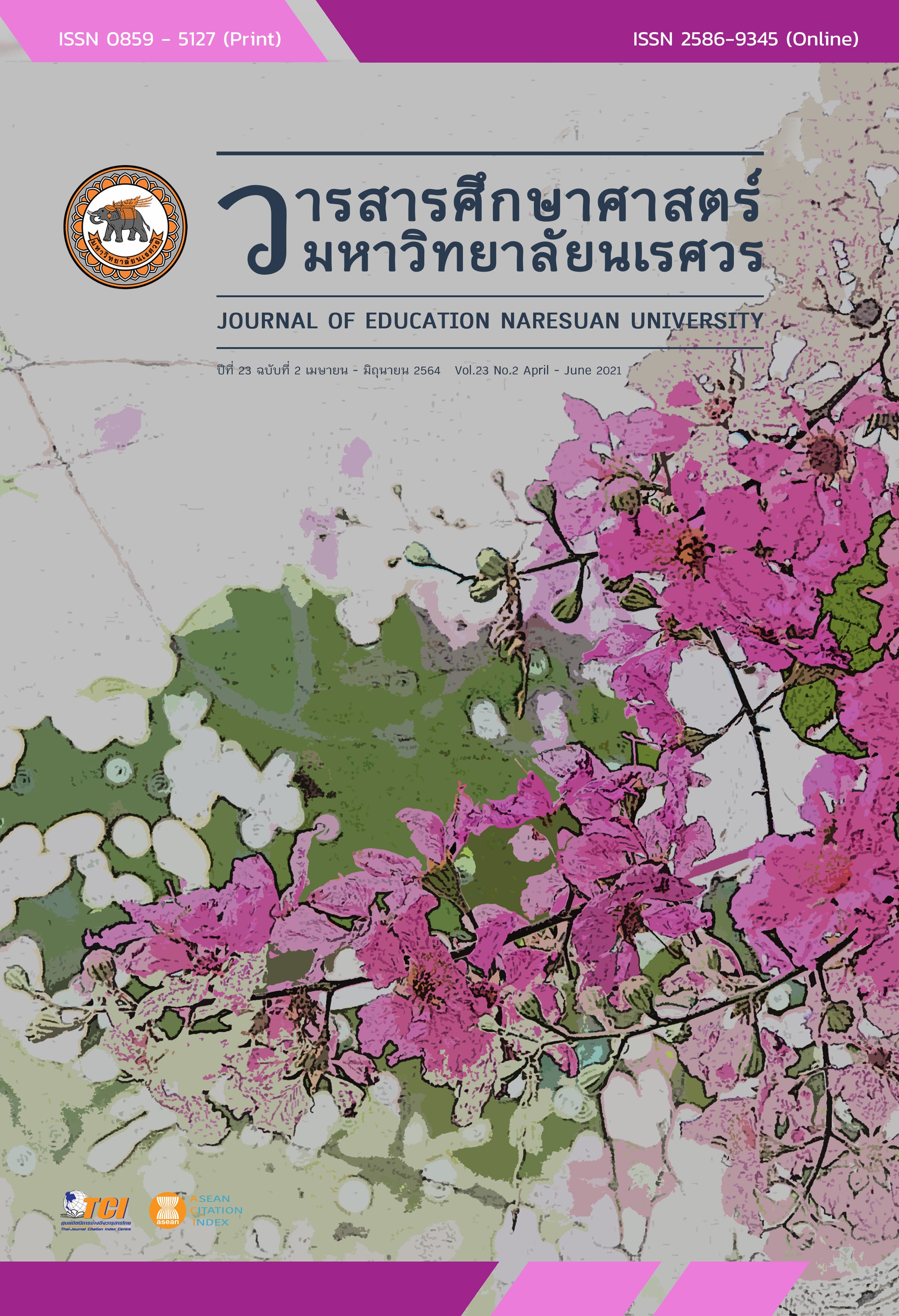A STUDY OF IMPORTANT HABITS OF MIND FOR UPPER SECONDARY SCHOOL STUDENTS IN THE 21ST CENTURY การศึกษาจิตนิสัยสำคัญของนักเรียนมัธยมศึกษาตอนปลายในศตวรรษที่ 21
Main Article Content
Abstract
The objectives of this study are 1) to examine the habits of mind of the upper secondary-school students; 2) to compare the upper secondary-school students’ habits of mind, categorized by gender, study plan, and school size; and 3) to study the encouragement of the upper secondary-school students’ habits of mind. The study consists of 2 phrases: Phrase I is to examine quantitative data; while Phrase II is to examine the qualitative data. The sample group includes 1,370 upper secondary-level students from Lower-northern part of Thailand. The sample size is measured by the principle of Power Analysis through G*POWER program. The research instruments are questionnaire, interview, and focus group. Quantitative data are analyzed, and the variances is also done through basic statistics. Qualitative data are analyzed by content analysis. The results of the study are found as following. 1) The upper secondary-school students’ habits of mind are in the high level. 2) The students’ habits of mind are different, which can be explained that girls have higher habits of mind than boys and Science Study Plan students have higher habits of mind than those who are in Arts and Language Study Plan. However, the habits of mind do not differ according to the school size. And 3) the habits of mind encouragements include more interactions among students in class, teachers’ understanding of each student’s individuality, teaching adaptation for the students’ nature, related-persons’ readiness for supporting, and study networking with other people.
Article Details
The owner of the article does not copy or violate any of its copyright. If any copyright infringement occurs or prosecution, in any case, the Editorial Board is not involved in all the rights to the owner of the article to be performed.
References
Ashenden, S. (1997). Feminism, postmodernism and the sociology of gender. Sociology after postmodernism, 40-64.
Autor, D. H., Levy, F., & Murnane, R. J. (2003). The skill content of recent technological change: An empirical exploration. The Quarterly journal of economics, 118(4), 1279-1333.
Choi, S. W., Gibbons, L. E., & Crane, P. K. (2011). lordif: An R package for detecting differential item functioning using iterative hybrid ordinal logistic regression/item response theory and monte Carlo simulations. Journal of statistical software, 39(8), 1-30.
Chunchi, N. (2003). Symbolic modeling through literary minitext to develop the public mind of second grade students (Doctoral dissertation). Bangkok: Srinakharinwirot University. [in Thai]
Costa, A. L., & Kallick, B. (2008). Learning and leading with habits of mind: 16 essential characteristics for success. Alexandria, Va: Association for Supervision and Curriculum Development.
Ellmann, M. (1968). Thinking about women. New York: Harcourt Brace Jovanovich.
Harvey, L. (2000). New realities: The relationship between higher education and employment. Tertiary Education & Management, 6(1), 3-17.
Karnchanawasi, S. (2009). Classical test theory (6th ed.). Bangkok: Chulalongkorn University Press. [in Thai]
Krueger, R. A., & Casey, M. A. (2000). A practical guide for applied research (3rd ed.). Thousand Oaks, CA: Sage Publications.
Morgan, D. L., & Krueger, R. A. (1993). When to use focus groups and why. In: D. L. Morgan (Ed.), Successful Focus Groups: Advancing the State of the Art (pp. 3-9). Newsbury Park, CA: Sage Publications. http://dx.doi.org/10.4135/9781483349008.n1
Nyumba, T., Wilson, K., Derrick, C. J., & Mukherjee, N. (2018). The use of focus group discussion methodology: Insights from two decades of application in conservation. Methods in Ecology and evolution, 9(1), 20-32.
Partnership for 21st Century Skills. (2008). 21st century skills, education & competitiveness: A resource and policy guide. Retrieved June 18, 2019, from www.21stcenturyskills.org/documents/21st_century_skills_education_and_competitiveness_guide.pdf
Quieng, M. C., Lim, P. P., & Lucas, M. R. D. (2015). 21st century-based soft skills: Spotlight on non-cognitive skills in a cognitive-laden dentistry program. European Journal of Contemporary Education, 11(1), 72-81.
Sparkes. (1996). Body and Space: Socialization and Lesson plan among the Shan and Isan. Proceedings of the 6th International Conference on Thai Studies. Chiang Mai: Chiang Mai University.


